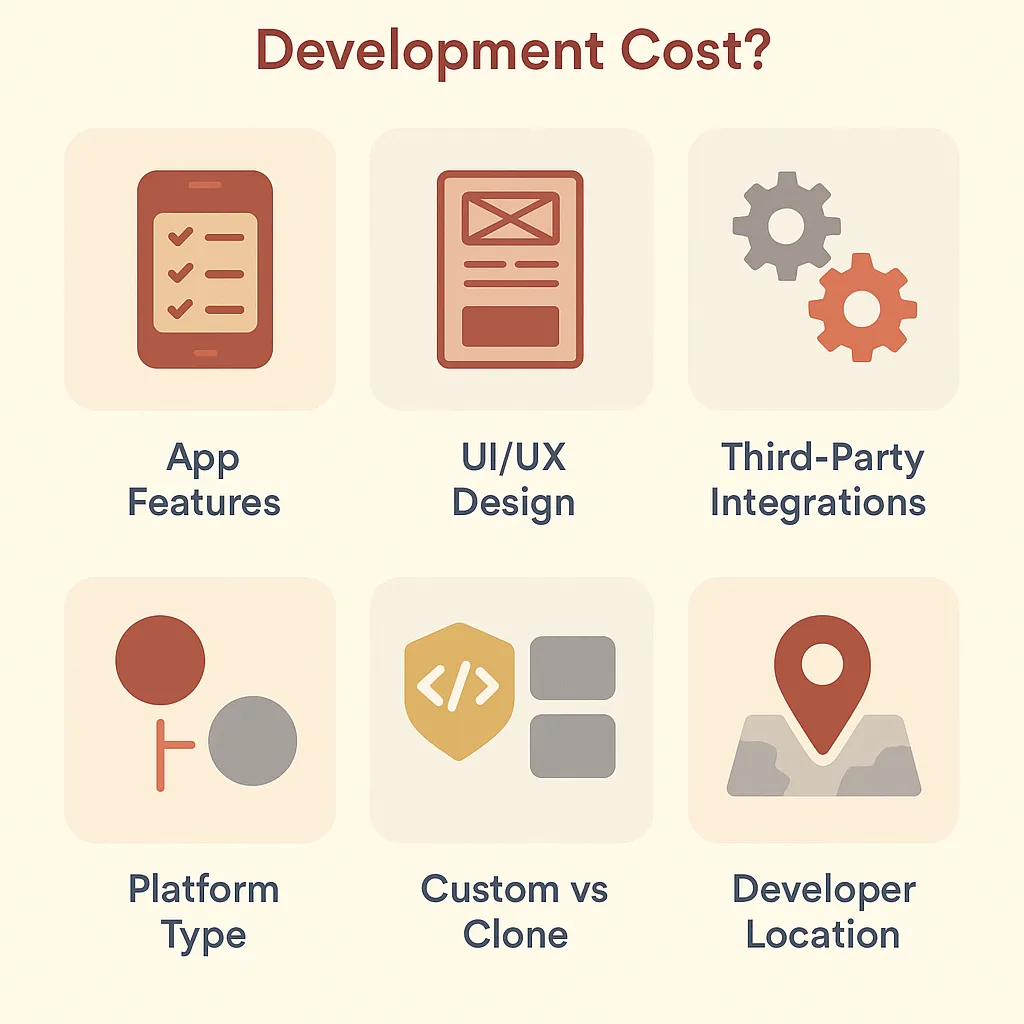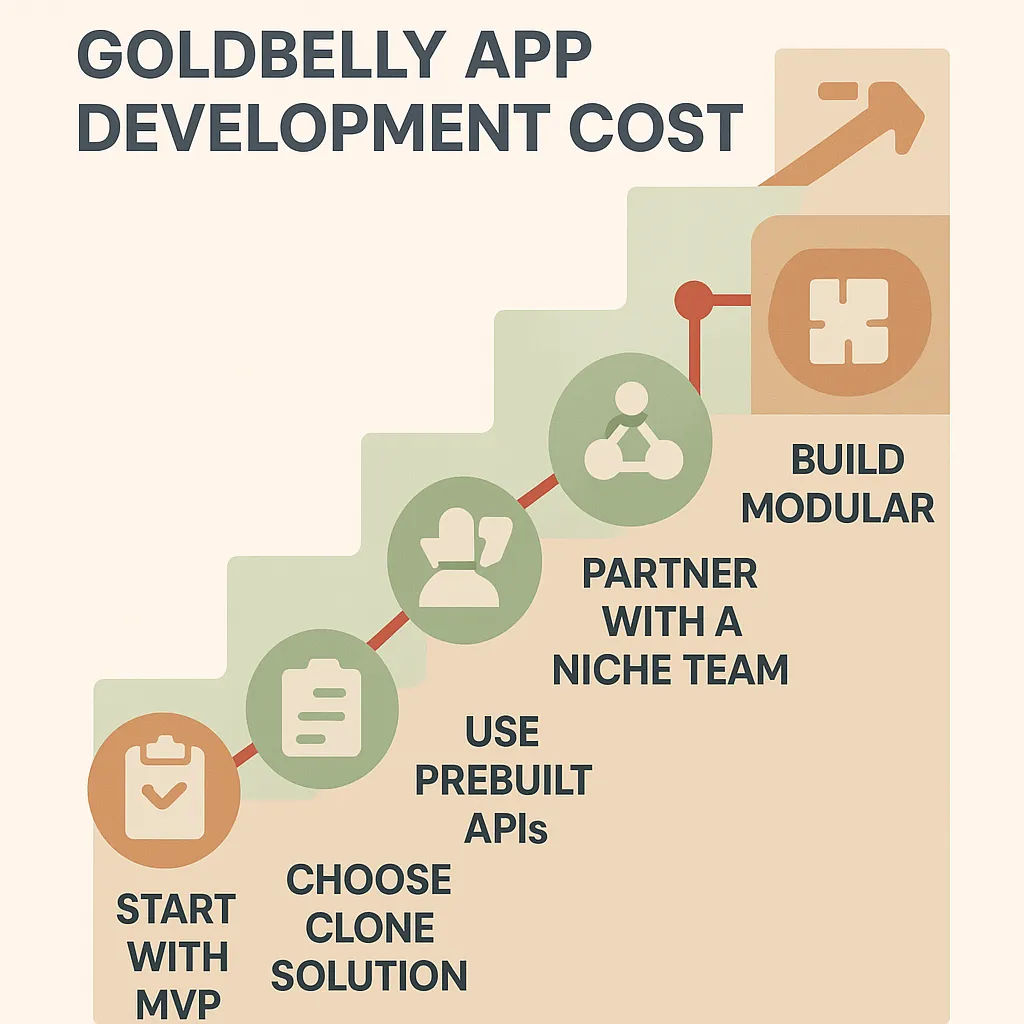Goldbelly App Development Cost in 2025 | Full Breakdown
Create a powerful, customizable streaming solution with Miracuves’ Goldbelly, equipped with high-performance features and next-gen technology.
Thinking about building a food delivery platform that specializes in gourmet, nationwide shipping — like Goldbelly? Before you dive into product sourcing, vendor onboarding, or logistics integration, the most critical question to ask is: what’s the cost to develop a Goldbelly-style app?
A Goldbelly-like platform does more than just deliver food. It connects iconic restaurants, bakeries, and chefs with customers across the country — which means your app needs to manage perishable shipping, marketplace listings, customer preferences, and high-trust payment flows. If you’re exploring how such a system might work or looking into technical approaches, you can also review the Goldbelly Clone solution offered by Miracuves for foundational insights.
Whether you’re a founder eyeing the gourmet delivery space or a SaaS entrepreneur tapping into the artisan food market, understanding the Goldbelly app development cost helps you allocate resources wisely, reduce risk, and build a scalable business model from day one.
In this guide, we’ll break down everything — from cost-driving factors and regional price differences to complexity-based estimates and smart ways to save — so you can launch your food-tech platform with clarity and confidence.

Key Factors That Influence Development Cost
Building a Goldbelly-style app means blending ecommerce, food delivery, and logistics — and that comes with several cost variables. Here are the key factors that shape your budget:
Marketplace Features → Product listings, chef/vendor profiles, search filters, and product detail pages all increase front-end development time.
Cold Chain Logistics Integration → Shipping perishable goods across the country requires custom delivery tracking, temperature control alerts, and courier integrations.
Order Scheduling & Tracking → Allowing users to pre-schedule orders and track shipment status in real-time adds backend and API costs.
Multi-Vendor Management → You’ll need vendor dashboards, inventory syncing, revenue splitting, and performance tracking — this increases app logic complexity.
Custom Design & UX → The Goldbelly experience is premium and curated. Matching that with elegant design and high-res product galleries requires UI/UX effort.
Platform Coverage → Developing for iOS, Android, and Web from day one expands your scope — and development hours.
Developer Location → Hiring in India or Eastern Europe can reduce your total cost by up to 60% compared to North America or Western Europe.
Goldbelly App Development Cost by App Complexity
To give you a clearer picture, here’s a breakdown of average development costs based on app complexity.
This range includes design, development, QA testing, and basic post-launch support — but not logistics partnerships or marketing expenses.
|
App Type
|
Estimated Cost Range (USD)
|
Description
|
|---|---|---|
|
MVP (Minimum Viable Product)
|
$15,000 – $30,000
|
Basic features like product listings, user profiles, search, cart & checkout
|
|
Standard Version
|
$30,000 – $70,000
|
Adds vendor panels, reviews, curated categories, admin dashboard
|
|
Full-Featured App
|
$70,000 – $150,000+
|
Multi-vendor system, AI recommendations, subscription box setup, video CMS
|
Note: These are development-only figures. Cold-chain logistics, fulfillment contracts, and post-launch marketing are separate investments.
Looking to scale modularly? Miracuves helps you start with an MVP and grow into a full-featured gourmet marketplace.
Goldbelly-Style Gourmet Marketplace Development Cost by Miracuves (2025 Pricing)
To help you plan your investment effectively, here’s a detailed breakdown of the Goldbelly Clone App Development Cost by Miracuves.
These costs include UI/UX design, backend engineering, testing, and post-launch support — excluding logistics contracts and marketing.
|
App Type
|
Estimated Cost Range (USD)
|
Description
|
|---|---|---|
|
MVP (Minimum Viable Product)
|
$999 – $1,499
|
Basic setup with vendor listings, search, cart, and checkout features. Ideal for validating market demand quickly.
|
|
Standard Version
|
$1,500 – $2,099
|
Adds product reviews, vendor panels, curated categories, and analytics dashboard for expansion-ready platforms.
|
|
Full-Featured App
|
$2,899 (Miracuves)
|
Fully-featured Goldbelly-style marketplace (Web + App + Admin) with multi-vendor setup, subscription boxes, AI recommendations, video CMS, and 7–14 day deployment.
|
Note: These packages are part of Miracuves’ 2025 Full-Stack App Development Framework.
Each Goldbelly-style solution includes source code ownership, 60-day technical support, and cloud deployment assistance.
Launch your Goldbelly Clone App in just 3–9 days — scalable, secure, and designed to handle gourmet eCommerce growth.
Average Cost Estimates by Region
Where your development team is based has a direct impact on project cost. Here’s a region-wise estimate to help you plan:
|
Region
|
Hourly Rate (USD)
|
Typical Cost for Standard App
|
|---|---|---|
|
North America
|
$100 – $200/hr
|
$100,000 – $200,000+
|
|
Western Europe
|
$80 – $150/hr
|
$80,000 – $160,000+
|
|
Eastern Europe
|
$40 – $80/hr
|
$40,000 – $90,000+
|
|
India & Southeast Asia
|
$20 – $50/hr
|
$20,000 – $60,000+
|
Offshore development (India or Eastern Europe) offers substantial savings — especially with the right foodtech-focused team.
Cost Breakdown by Development Stage : Goldbelly Clone
Understanding how your budget gets allocated during each phase of building a Goldbelly clone app can help you plan smarter and avoid nasty surprises mid-project.
Here’s a typical cost distribution breakdown:
|
Development Stage
|
Estimated % of Total Cost
|
Includes
|
|---|---|---|
|
Discovery & Planning
|
5–10%
|
Market research, competitor analysis, defining user personas, feature scoping, technical requirements.
|
|
UI/UX Design
|
10–15%
|
Wireframing, prototyping, responsive design, visual branding, user experience mapping.
|
|
Frontend & Backend Dev
|
40–50%
|
Core feature development, database architecture, APIs, payment integrations, dashboard and logic build.
|
|
Testing & QA
|
10–15%
|
Manual and automated testing, bug fixing, device/browser compatibility checks, performance tuning.
|
|
Deployment & Launch
|
5–10%
|
App store submission (Android/iOS), server setup, production deployment, performance monitoring tools.
|
|
Maintenance & Updates
|
10–20%
|
Post-launch bug fixes, new features, server maintenance, user support, compliance updates.
|

How to Reduce Goldbelly App Development Costs (Without Compromising Quality)
Here’s how to keep your budget lean while still building a powerful food delivery marketplace:
Start with an MVP → Focus on core workflows: browse, order, ship. Add advanced features post-launch.
Choose an experienced clone development partner → Teams with food delivery experience can cut build time and reduce friction.
Use a Goldbelly clone framework → Speeds up time-to-market while retaining flexibility to customize.
Leverage APIs & SaaS → For logistics, subscriptions, and payments — use battle-tested providers instead of building from scratch.
Build modularly → Add seasonal campaigns, referral systems, and analytics in later phases.
With the right phased approach, you can launch faster, iterate smarter, and scale efficiently.
Choose the Right Development Partner
Even with a solid plan and a smart budget, building a high-end food delivery platform is no small task. Choosing the right development partner ensures a smoother launch, robust performance, and long-term adaptability.
Here’s what to look for in a Goldbelly clone development company:
Experience in foodtech and marketplace platforms
Successful track record in shipping, vendor portals, and ecommerce tools
Full-service offering — UI/UX, backend, integrations, testing, support
Proven ability to scale platforms post-launch
If you’re evaluating potential collaborators, this guide to choosing a Goldbelly clone development company outlines what to consider and how to assess technical fit.
At Miracuves, we don’t just build apps — we create growth-ready, scalable marketplace solutions. Whether you’re selling cookies across states or shipping gourmet meals coast to coast, our clone-based tech helps you go live faster and grow smarter.
Conclusion
The cost to develop a Goldbelly app depends on the size of your feature set, development region, and how customized your marketplace needs to be. You can expect to spend anywhere from $30,000 for an MVP to $250,000+ for a fully scalable gourmet delivery platform.
Looking to build your own Goldbelly-style app?
Talk to Miracuves today for a cost estimate, tech roadmap, and go-to-market plan tailored to your vision.
Explore more clone app guides, pricing models, and launch strategies in our complete clone solution series.
Frequently Asked Questions
Building a Goldbelly-style marketplace can cost $30,000 to $250,000+, depending on scope and features.
With Miracuves’ ready-made Goldbelly Clone Solution, you can launch your app in just 3–9 days for only $2,899, including full setup and deployment.
Yes! White-label solutions can cut costs by 40–60% and speed up time-to-market. At Miracuves, our prebuilt Goldbelly clone comes with essential features and is fully customizable — perfect for startups who want to launch fast without starting from scratch.
Traditionally:
MVP: 4–6 weeks
Standard version: 8–12 weeks
Full-featured app: 3–6 months
With Miracuves’ ready-made Goldbelly Clone Solution, you can launch your complete platform in just 3–9 days, including setup, customization, and deployment.
Essential features include:
Multi-vendor onboarding
Curated food categories
Cart & checkout with payment gateway
Delivery tracking
Customer reviews
Gifting options (optional)
Admin dashboard
You can also add AI recommendations, video recipes, and loyalty programs as premium add-ons.
A typical Goldbelly clone stack includes:
Frontend: React.js, Flutter, or Swift/Kotlin
Backend: Node.js, Laravel, or Django
Database: PostgreSQL or MongoDB
Cloud & Hosting: AWS, DigitalOcean, or GCP
Payments: Stripe, Razorpay, or PayPal
We’ll recommend the best stack based on your goals and scalability needs.



